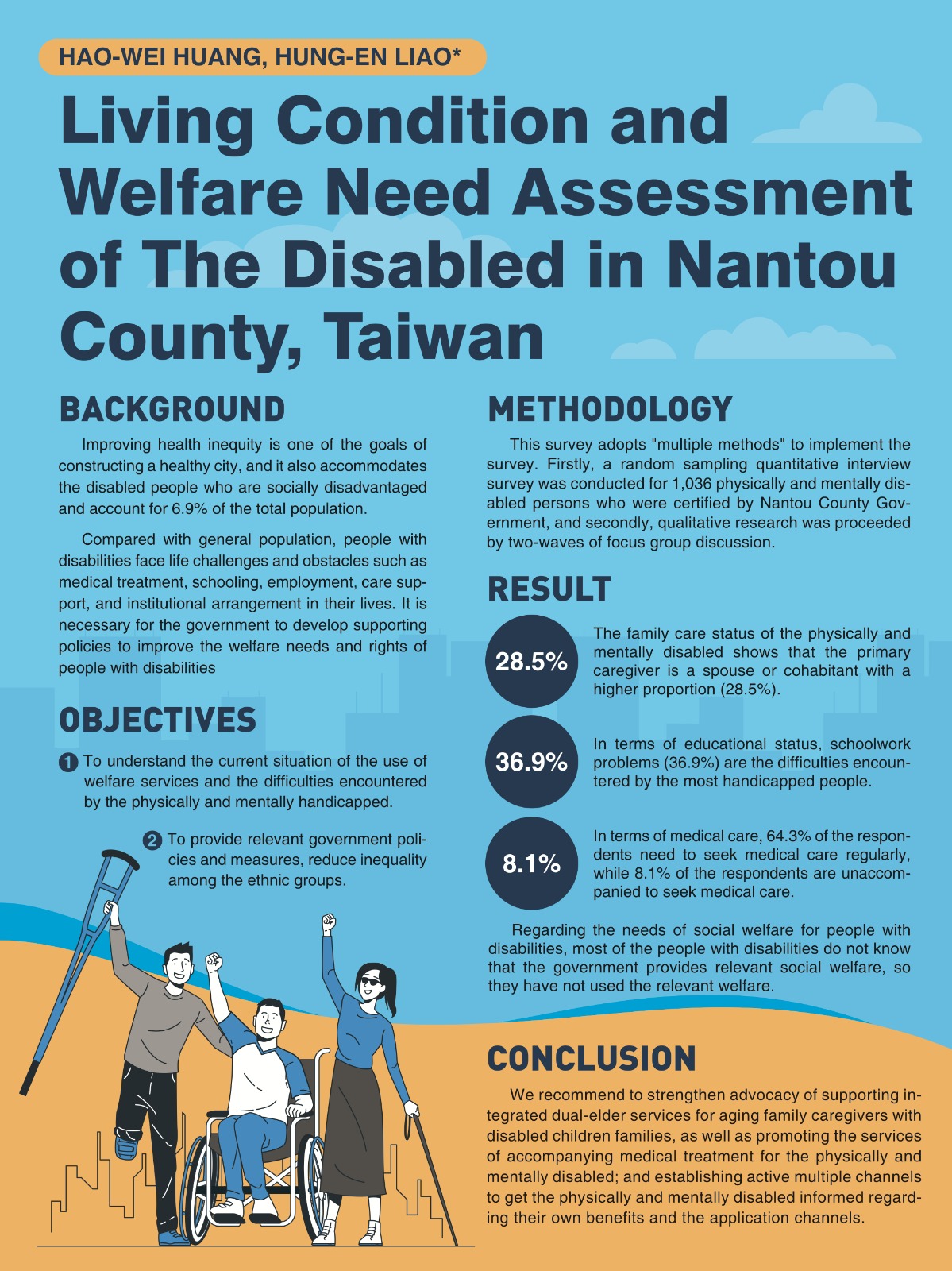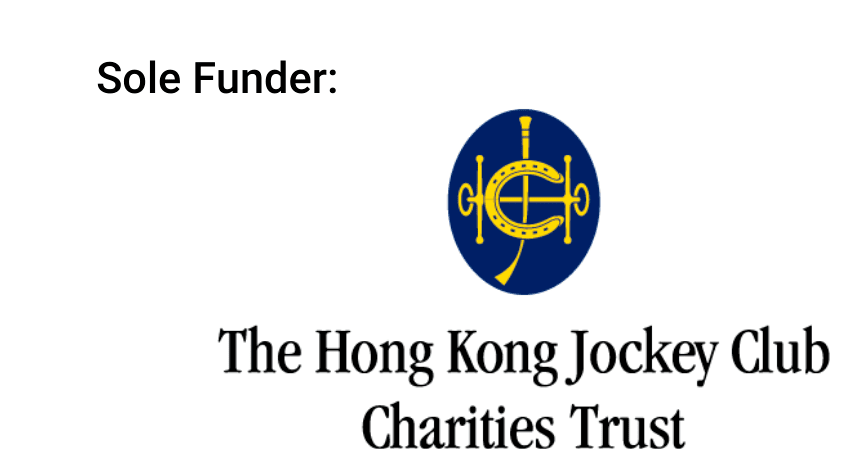Presenter 6: Living Condition and Welfare Need Assessment of The Disabled in Nantou County, Taiwan

Living Condition and Welfare Need Assessment of The Disabled in Nantou County, Taiwan
Background: Improving health inequity is one of the goals of constructing a healthy city, and it also accommodates the disabled people who are socially disadvantaged and account for 6.9% of the total population.Compared with general population, people with disabilities face life challenges and obstacles such as medical treatment, schooling, employment, care support, and institutional arrangement in their lives. It is necessary for the government to develop supporting policies to improve the welfare needs and rights of people with disabilities
Objectives: (1) To understand the current situation of the use of welfare services and the difficulties encountered by the physically and mentally handicapped. (2) To Provide relevant government policies and measures, reduce inequality among the ethnic groups.
Methodology: This survey adopts "multiple methods" to implement the survey. Firstly, a random sampling quantitative interview survey was conducted for 1,036 physically and mentally disabled persons who were certified by Nantou County Government, and secondly, qualitative research was proceeded by two-waves of focus group discussion.
Result: The family care status of the physically and mentally disabled shows that the primary caregiver is a spouse or cohabitant with a higher proportion (28.5%). In terms of educational status, schoolwork problems (36.9%) are the difficulties encountered by the most handicapped people. In terms of medical care, 64.3% of the respondents need to seek medical care regularly, while 8.1% of the respondents are unaccompanied to seek medical care. Regarding the needs of social welfare for people with disabilities, most of the people with disabilities do not know that the government provides relevant social welfare, so they have not used the relevant welfare.
Conclusion: We recommend to strengthen advocacy of supporting integrated dual-elder services for aging family caregivers with disabled children families, as well as promoting the services of accompanying medical treatment for the physically and mentally disabled;;and establishing active multiple channels to get the physically and mentally disabled informed regarding their own benefits and the application channels.


